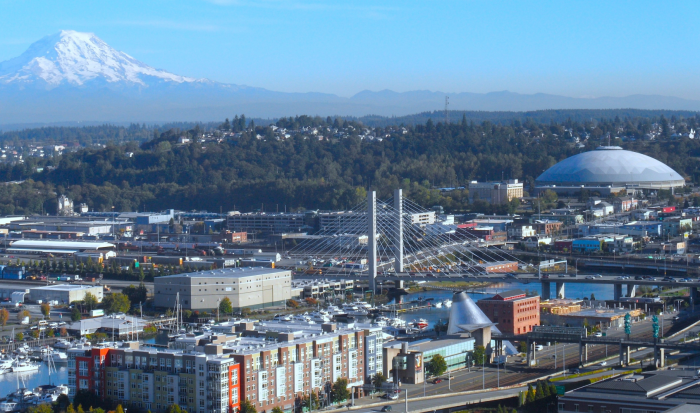How Public Safety Leaders Can Make Their DEI Efforts More Effective

Eleanor Hecks is a senior HR and business writer at Designerly Magazine. After growing up with parents who both worked in the public sector, Eleanor is passionate about specifically applying her insights to those in the government and education professions. You can connect with her on LinkedIn or follow Designerly on X for business and design insights.
Public safety leaders have an immense responsibility to ensure diversity, equity, inclusion and accessibility (DEIA) is a top priority within their organization. By enhancing their initiatives, they can conduct their jobs better and retain all the benefits that result from their efforts.
What Is DEIA in Public Safety?
In recent years, public safety organizations have increasingly recognized the need to embrace DEIA to serve their communities. These elements are critical to building trust, ensuring fair treatment and enhancing the effectiveness of public safety efforts
Here’s how they break down:
Diversity
Diversity in public safety is about ensuring teams reflect the racial, ethnic, gender and socio-economic backgrounds of the population they protect.
Equity
Equity is often confused with equality, but there is a fundamental difference. Equality is about giving everyone the same resources, while equity means ensuring individuals have access to the specific support they need to succeed. In public safety, this means tailoring training, mentorship and professional development opportunities to ensure underrepresented groups advance and thrive.
Inclusion
Even in the most diverse teams, inclusion can be lacking. True inclusion requires an environment where everyone feels valued and heard. Public safety leaders ensure this by fostering a culture where diverse individuals can contribute their efforts freely.
Accessibility
Accessibility in public safety verifies all have equal job opportunities and access to services regardless of their physical or cognitive abilities. From inclusive hiring practices to unrestricted building and equipment design, accessibility ensures public safety services are available to everyone in the community.
DEIA Efforts in Public Safety
Historically, public safety efforts have struggled with an underrepresentation of candidates from diverse backgrounds. For example, data from the Washington State Patrol between 2017 and 2021 revealed significant disparities in the psychological evaluation outcomes of applicants.
Candidates of color — such as Pacific Islanders and Asians — were rejected at much higher rates compared to their white counterparts. While 71.1% of white applicants were recommended, only 33.3% of Pacific Islanders and 45.5% of Asian applicants moved forward in the evaluation process.
This underrepresentation is compounded by the significant staffing shortages currently faced within public safety agencies. As older generations retire, they take with them invaluable institutional knowledge built over decades of experience — including knowledge of how to effectively promote unity within diverse communities. This phenomenon underscores the critical need for a diverse workforce that can bring fresh perspectives and innovative solutions based on their own lived experiences.
Recognizing these challenges, President Biden released Executive Order 14035 on June 25, 2021, establishing a government-wide initiative to promote DEIA across the federal workforce. This order ensures all public servants have equal opportunities to reflect their communities.
By addressing staffing shortages with a renewed focus on filling representation gaps, public safety leaders can strengthen their agencies and maintain the high standards of care needed to keep communities safe.


In recent years, public safety organizations have increasingly recognized the need to embrace DEIA to serve their communities.
ELEANOR HECKS
Current Efforts Public Safety Organizations Are Making
Despite this existing challenge, some current efforts agencies are making are based on best practices that the U.S. Government Accountability Office recommends:
- Leadership commitment: Identifying DEIA leaders within organizations to increase efforts and holding leadership accountable for prioritizing diversity across all public safety levels
- Making DEIA a strategic plan: Developing long-term DEIA strategies aligned with an agency’s overall mission and objectives, ensuring diversity becomes an integral part of the planning process
- Measurement: Implementing quantitative and qualitative metrics to evaluate the impact of DEIA programs, helping leaders track progress and making necessary adjustments to improve outcomes
- Accountability: Linking DEIA initiatives to performance metrics, ensuring leaders are contributing to diversity-related goals
- Succession planning: Proactively identifying and developing diverse talent to fill future leadership roles, building a pipeline of qualified people from various backgrounds
- Recruitment: Expanding recruitment efforts to attract more diverse candidates and ensure a steady stream of qualified applicants from underrepresented groups
- Employee involvement: Encouraging employees from all backgrounds to participate in DEIA initiatives
- DEIA training: Offering training programs for management and staff to educate them on the benefits and importance of diversity, equity and inclusion in their roles
- Communication: Effectively communicating the entity’s commitment to DEIA to internal stakeholders and the broader community
Why Representation Matters in Public Safety
A diverse workforce in public safety is more than a matter of fairness — it is critical in building trust and improving outcomes in these agencies’ communities. When these groups reflect the racial, ethnic and cultural diversity of their communities, they can better address the needs and concerns of all citizens.
For instance, officers from minority backgrounds often have a deeper understanding of the communities they serve. This can lead to more culturally sensitive interactions and an increased ability to empathize with these populations’ challenges.
Diversity within public safety agencies also reduces hostility and tension by breaking down barriers between public servants and the communities they protect. For example, when people see officers who look like them or share their cultural background, it can make them more approachable and relatable. This connection leads to stronger relationships, enhancing public safety and community well-being.
How Public Safety Leaders Can Improve Their DEIA Efforts
As a public safety leader, you hold the power to improve your DEIA efforts. Beyond best practices, you can take DEIA to the next level by embodying certain values and behaviors:
- Be transparent and respectful: Build trust by clarifying your decision-making processes regarding DEIA initiatives. This includes openly discussing the challenges and progress the organization is making and acknowledging where you need to improve.
- Demonstrate understanding of the past and present realities: Leaders who take the time to educate themselves about system inequalities, discrimination and the struggles of marginalized communities can advocate for change.
- Hold accountability to communities: Hold yourself accountable to the communities you serve. You can do this by building relationships with community coalitions and advocacy groups, listening to their concerns, and incorporating their feedback into policy decisions.
- Leverage position of power for positive impact: You have considerable influence, so use that to advocate for positive changes by pushing for policies that support DEIA efforts.
- Value your team: Ensure every member of your team feels appreciated. This includes recognizing their efforts and providing growth opportuni
Building Trust Through DEIA Leadership
Public safety entities are at the center of every community, and their ability to serve and protect effectively ultimately depends on their commitment to DEIA. Leaders within these agencies are pivotal in ensuring they translate these principles into actions. In turn, they create a culture of respect and understanding, breaking down the barriers that historically excluded marginalized groups.
Want new articles before they get published? Subscribe to our Awesome Newsletter.

CAREER ADVICE

GOV TALK




